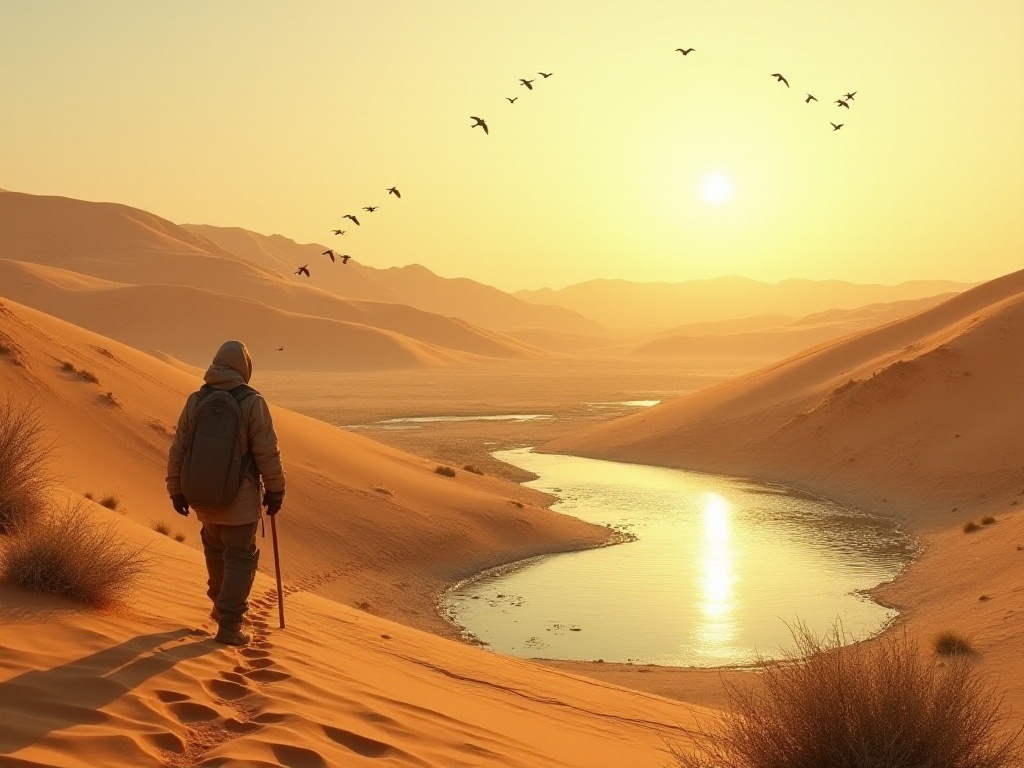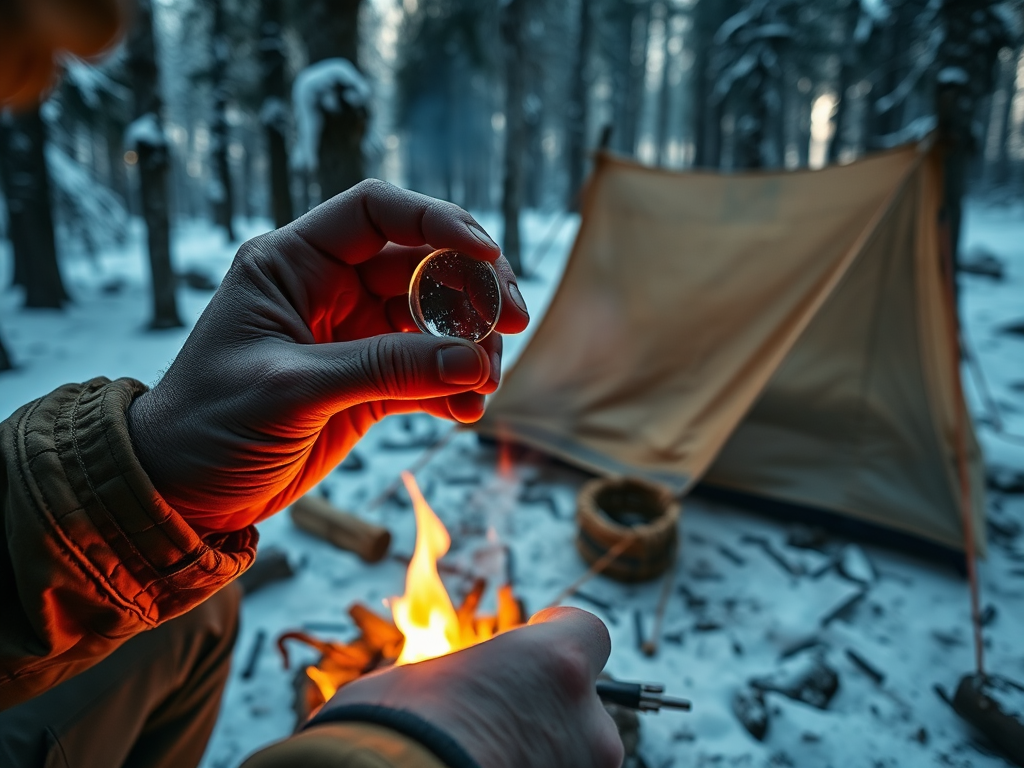Preface
Hello friends, today I want to discuss a very practical topic. Last month, I almost got lost in the wilderness, which left a deep impression on me. Although I returned safely in the end, this experience gave me a whole new understanding of outdoor survival. As someone who frequently leads teams on wilderness adventures, I feel it's necessary to share these experiences and lessons with everyone.
The experience from that day remains vivid in my memory. I went with several outdoor enthusiast friends to explore a new hiking trail. This trail was located deep in the mountains, reportedly with spectacular scenery, but rarely visited due to its complex terrain. We originally planned to return before sunset, but in the afternoon, the sky suddenly became overcast, and visibility dropped dramatically. Just as we were preparing to find our way down the mountain, we realized we had completely lost our direction.
Planning First
I remember when I first started enjoying outdoor activities, I thought bringing some snacks and water was enough. Looking back now, I was so naive. Through years of experience, I've deeply realized: the most important thing in outdoor activities isn't what equipment you bring, but how much preparation you've done.
Before each departure, I leave detailed itinerary plans with my family. How detailed? For example, when I went hiking at Wugong Mountain last year, I sent my mom a super detailed document: when I expected to reach which location, where I would stay, who I was going with, where the car would be parked, when I expected to return. You might think I'm being too fussy, but it's these details that could save your life in crucial moments.
Actually, a complete outdoor activity plan should include more content. First is route planning, requiring careful study of topographic maps and understanding of key locations like landmarks, water sources, and rest stops along the way. Second is time planning, needing to reserve adequate flexible time and consider possible weather changes and physical exertion. Third is personnel assignments, clarifying each person's responsibilities, such as who is responsible for navigation, who carries the first aid kit, who handles communication, etc.
I suggest everyone make a detailed checklist before departure, including the following aspects: route information (starting point, endpoint, estimated time, difficulty level), weather forecast (temperature, precipitation probability, sunrise and sunset times), emergency contacts (local guides, rescue teams, hospitals, etc.), equipment list (essential equipment, emergency equipment, personal equipment). This checklist not only helps us prepare adequately but also provides important reference when encountering unexpected situations.
I remember once when I led a team to explore a rarely visited valley. Before departure, we spent an entire week preparing. We not only studied satellite maps but also contacted local guides to understand road conditions. Although we ultimately couldn't complete the planned route due to weather, our thorough preparation allowed us to adjust our plans timely and ensure all team members' safety.

The Way of Equipment
Speaking of equipment, don't underestimate its importance. Once, just because I didn't bring a waterproof bag, everything in my pack got wet during a downpour. Since then, I've never dared to be careless. Now my essential items for every trip include: tent or temporary shelter materials, backpack, survival knife, waterproof matches or lighter, food and water. These things might sound basic, but they're truly fundamental for outdoor survival.
I have many insights to share about equipment selection and use. First is backpack selection - a good outdoor backpack should have these features: good waterproofing, reasonable weight distribution, and sufficient storage space. I usually choose 45-65 liter backpacks, which can meet 2-3 days of outdoor activity needs without being too heavy to affect movement. The arrangement of items inside the backpack is also crucial - heavy items should be placed close to the back to reduce the sense of burden. Frequently used items should be placed in easily accessible positions, such as flashlights, maps, compasses, etc.
Regarding survival knives, I particularly want to emphasize the importance of versatility. A good survival knife needs to be not only sharp but also capable of chopping, cutting, and scraping operations. I currently use a 23cm fixed blade knife made of 440C stainless steel, which is both durable and rust-resistant. The handle is made of non-slip material, ensuring a firm grip even when wet. Additionally, the sheath integrates a fire starter and knife sharpener, making it quite practical.
Waterproof matches or lighters are crucial among survival equipment. I usually carry three types of fire-starting tools: waterproof matches, lighter, and fire steel. This may seem redundant, but in wilderness environments, a backup plan often comes in handy. Waterproof matches should be stored in waterproof containers, lighters should preferably be windproof models, and fire steel should come with a striker.
Food selection is also crucial. I usually bring high-calorie, easy-to-store foods like chocolate, nuts, and jerky. These foods are not only easy to carry but can also provide sufficient energy in emergency situations. Water reserve is even more important - generally recommend preparing 3-4 liters of water per person per day. Besides carrying drinking water directly, I also bring portable water filters and water treatment tablets for emergencies.
I particularly want to emphasize the importance of tape. Many people might think tape is just for sticking things together, but that's not all. It can be used to repair equipment, prevent blisters, and even serve as bandages in emergencies. To save space, I always wrap a small roll around my water bottle to carry with me.
Beyond this basic equipment, different environments and seasons require corresponding special equipment. For example, in cold regions, bring warm sleeping bags and cold-weather clothing; in high-altitude areas, prepare sun protection equipment and altitude sickness medication; in jungle areas, bring insect repellent and snake protection gear.

Skills Are King
You never know when you'll need survival skills. Take building a temporary shelter for example - this isn't something you can learn just by watching a few videos. I suggest everyone practice in a safe place near home, like a park or backyard. Try building a simple shelter using branches and leaves to experience the process.
Speaking of shelter building, I want to especially emphasize the importance of site selection. First, avoid potentially dangerous areas like near dead trees, places where flash floods might occur, or wildlife paths. Second, consider the terrain - preferably choose flat areas slightly higher than the surrounding ground to avoid water accumulation. Third, pay attention to direction - the entrance should preferably face away from the prevailing wind direction to reduce wind and rain exposure.
During construction, make full use of natural resources and terrain features. If there are large trees or rocks, you can build directly against them to save materials and energy. The framework must be sturdy, with the main structure preferably using thicker branches to withstand wind and rain. Covering materials can be leaves, ferns, or rain tarps, and should be layered from bottom to top for better waterproofing. Remember to lay an insulating layer on the ground using dry grass, leaves, or moisture-proof pads - this is crucial for warmth.
Here's a particularly useful tip: if your cotton clothes get wet, you can stuff dry grass, leaves, or pine needles between the clothes and your skin. These natural materials provide excellent insulation. I used this trick while hiking in Hunan last year, and it worked surprisingly well.
In wilderness survival skills, finding and purifying water sources is also very important. In the wild, you can find water sources by observing plants, terrain, and animal activity. For example, ant trails usually lead to water sources, and moss typically grows in shaded, damp places - these are important clues for finding water. After finding a water source, purification is essential. The most basic method is boiling; if boiling isn't possible, use portable water filters or water treatment tablets.
The ability to determine direction is also essential. Besides using a compass, we need to learn to use natural phenomena to judge direction. For example, in the Northern Hemisphere, the sun rises in the east and sets in the west, with the sun in the south at noon; tree rings grow denser on the shaded side; moss generally grows on the north side of trees. While these natural indicators aren't as accurate as a compass, they can be useful in emergencies.
Wilderness first aid skills are equally important. Basic skills like bandaging, stopping bleeding, and stabilization must be mastered. I recommend participating in professional wilderness first aid training - this knowledge could save lives in critical moments. Remember to carry a basic first aid kit containing bandages, band-aids, disinfectants, pain medication, and other necessities.

Distress Signals
When encountering danger outdoors, distress signals are particularly important. We commonly talk about two types of distress signals: visual signals and sound signals. Visual signals can be mirror reflections, bright-colored clothing, or flashlight signals. For sound signals, the most commonly used is a whistle, with the distress signal being three short consecutive blasts.
There are some details to note about using distress signals. When using mirror reflection for rescue, choose times with abundant sunlight and reflect sunlight to places where people might pass by. At night, you can flash a flashlight in the SOS signal pattern: three short flashes, three long flashes, three short flashes. When using a whistle for rescue, conserve energy by blowing at intervals rather than continuously.
Creating ground distress signals is also an effective method. The international distress symbol "SOS" can be made using rocks, branches, or other visible materials on the ground. Make sure the signal is large enough and created in an open area to be easily spotted by aerial rescue personnel. If you have colored rescue tape, tie it in high, visible locations to increase chances of being found.

Survival Elements
Regarding survival elements, water is paramount. According to professional data, humans can survive three weeks without food but only three days without water. Therefore, finding and ensuring clean water sources is the top priority.
When finding water sources in the wild, pay special attention to water quality. Mountain spring water may look clear but might contain harmful substances or bacteria. Even water that looks clean should be treated before drinking. If water purification equipment isn't available, use boiling method. After water boils, continue boiling for 3-5 minutes to ensure safety.
Food supply is also a crucial survival element. In the wild, we need to learn to identify edible wild plants. However, be especially careful - if you're not 100% certain about a plant, better not risk eating it. Some wild mushrooms that look like edible fungi might be highly poisonous - this must be remembered.
Fire-making and staying warm are also basic survival elements. In the wild, fire isn't just for boiling water and cooking, but also for keeping wild animals away and providing a sense of security. It's important to learn different fire-making methods, such as using fire stones, fire steel, or even primitive friction fire-starting. Also learn techniques for making fire in wet conditions, like finding dry tinder and using the dry inner layers of tree bark.

Mindset is Key
Throughout the outdoor survival process, mindset might be the most easily overlooked yet most important factor. Statistics show that in outdoor emergency incidents, about 75% of people worsen their situation due to panic. Staying calm isn't just empty talk - it directly affects your survival probability.
My advice is: when you realize you're lost, the first thing to do is stop. Many people's instinctive reaction is to keep walking, hoping to find familiar landmarks, but this often makes the situation worse. U.S. search and rescue statistics show that 90% of successful rescues occur when the missing person stays put.
When facing difficulties in the wild, maintaining a positive and optimistic mindset is very important. Believe that as long as you make the right choices, you can overcome difficulties. You can adjust your mindset through simple methods like deep breathing, reciting mantras, or recalling knowledge learned in training. Keep a clear head, rationally analyze the current situation, and develop feasible response plans.
Meanwhile, learn to properly allocate energy and resources. Don't over-exert yourself due to temporary anxiety - understand the importance of rest and conserve energy for possible long waiting periods. In team activities, encourage each other and face difficulties together. Everyone in the team must stay calm and cooperate - this increases survival probability.

Final Words
Through this sharing, have you gained a new understanding of outdoor survival? Actually, outdoor activities aren't that scary - as long as we make adequate preparations, master necessary skills, and maintain the right mindset, we can enjoy endless fun in nature.
Outdoor adventure indeed holds many unknowns and challenges, but that's exactly where its charm lies. Each experience is an opportunity for learning and growth, helping us better understand ourselves and respect nature more. I hope everyone who loves the outdoors can ensure their safety while enjoying nature's beauty.
By the way, do you have any outdoor survival experiences to share? Feel free to tell me in the comments. Next time we can talk about more interesting outdoor adventure stories.
Related articles




